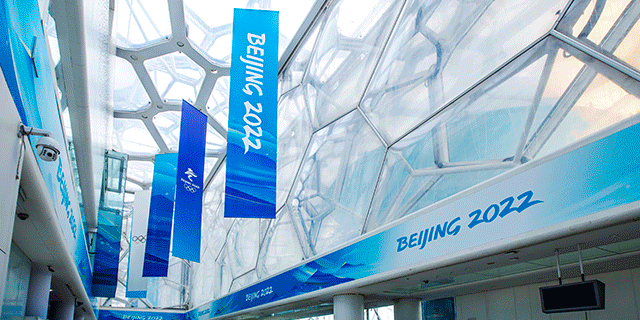
The gif includes the scenes of Big Air Shougang, the National Speed Skating Oval, Ice Cube, the National Indoor Stadium, the Capital Indoor Stadium, the National Ski Jumping Center, Beijing Medal Plaza, Beijing Olympic/Paralympic Village. Image Courtesy of Geng Dapeng, Song Jiangpeng, Beijing Daily, Lin Cunzhen and the Design Team.
Editor’s note: Along with the successful performance and accomplishment of the Beijing 2022 Olympic Winter Games and Paralympic Winter Games, this largest international sporting event did not only leave an extremely wonderful memory for the audience across the world, but it also became a grand event in history as it broke many records in different fields. From the Beijing 2008 Summer Olympic Games to the Beijing 2022 Olympic Winter Games, the development in the visual landscape design for the Olympic Games has also subtly influenced and promoted urban progress, technological applications, economic development, as well as quality education for youth. From the popular mascot Bing Dun Dun, to the Beijing 2022 emblem framed with the athletes in the background of the stadium; from the design and installation of hoardings at stadiums, to the integration of ecological sustainability and the layout and implementation of the competition venues, all of which reflect the ingenuity and efforts of the designers.
Compared with other design forms and contents, what are the different requirements for the Olympic visual design? What is special about the design for Beijing 2022 Olympic Winter Games? In the history of the Olympic design, what kind of progress and influence has the Chinese Olympic design made? CAFA ART INFO conducted an exclusive interview with Lin Cunzhen, Director of Arts for Beijing 2022 Winter Olympic Games and Paralympics Games and Deputy Dean of the School of Design, CAFA, to discuss the relationship between contemporary art design and national aesthetic cognition, as well as the interactive process between Olympic design history and Chinese Olympic design.
 Work Photo of Ms. Lin Cunzhen
Work Photo of Ms. Lin Cunzhen
Interview Date: February 18, 2022
Interviewee: Lin Cunzhen, Deputy Dean of the School of Design, CAFA
Interviewer & Editor: Sue Wang
Photo Courtesy of Mr. Lin Cunzhen and the Design Team.
CAFA ART INFO: As it is known to all, the visual design of each Olympic Games brings together the cultural essence of the host country, integrates the epochal characteristics, reflects and condenses the thinking and hard work of many designers. In addition to following the rules of the International Olympic Committee, the host country also incorporates as many cultural and artistic elements as possible into the design. The Olympic Games is not just a sports arena, but it is also a competition for design. What do you think is the standard to measure the success of the design for the Olympic Games? Does it need to suit both refined and popular taste? Or to the greatest degree of dissemination?
Lin Cunzhen: I think that first of all it should be dissemination, because the landscape design for the Olympic Games is different from other designs. Its primary goal is to serve international sports competitions, and the Olympic Games has a very large scope in global broadcast. Therefore, no matter whether it is affected by the pandemic, more than 90% of the audience was watching the Olympic Games on TV. Such characteristics lead to a huge difference between the design of the Olympic Games and the general space design or event design. Therefore, how to judge whether the Olympic landscape design is excellent, I think functionality and recognition should be given the first priority. The concept of identification lies in the identification of the Olympic Games itself and the identification of the host country. In the seven or eight years since we started to intervene in the bidding process in 2014, we have actually revolved around a sentence, “This is an Olympic Games, this is an Olympic Games held in Beijing, China.” This is also the core of our work. In my opinion, judging the quality of the Olympic Games design also depends on whether the message can be conveyed clearly.
 Emblem of Beijing 2022 Olympic Winter Games
Emblem of Beijing 2022 Olympic Winter Games
 Emblem of Beijing 2022 Paralympic Winter Games
Emblem of Beijing 2022 Paralympic Winter Games
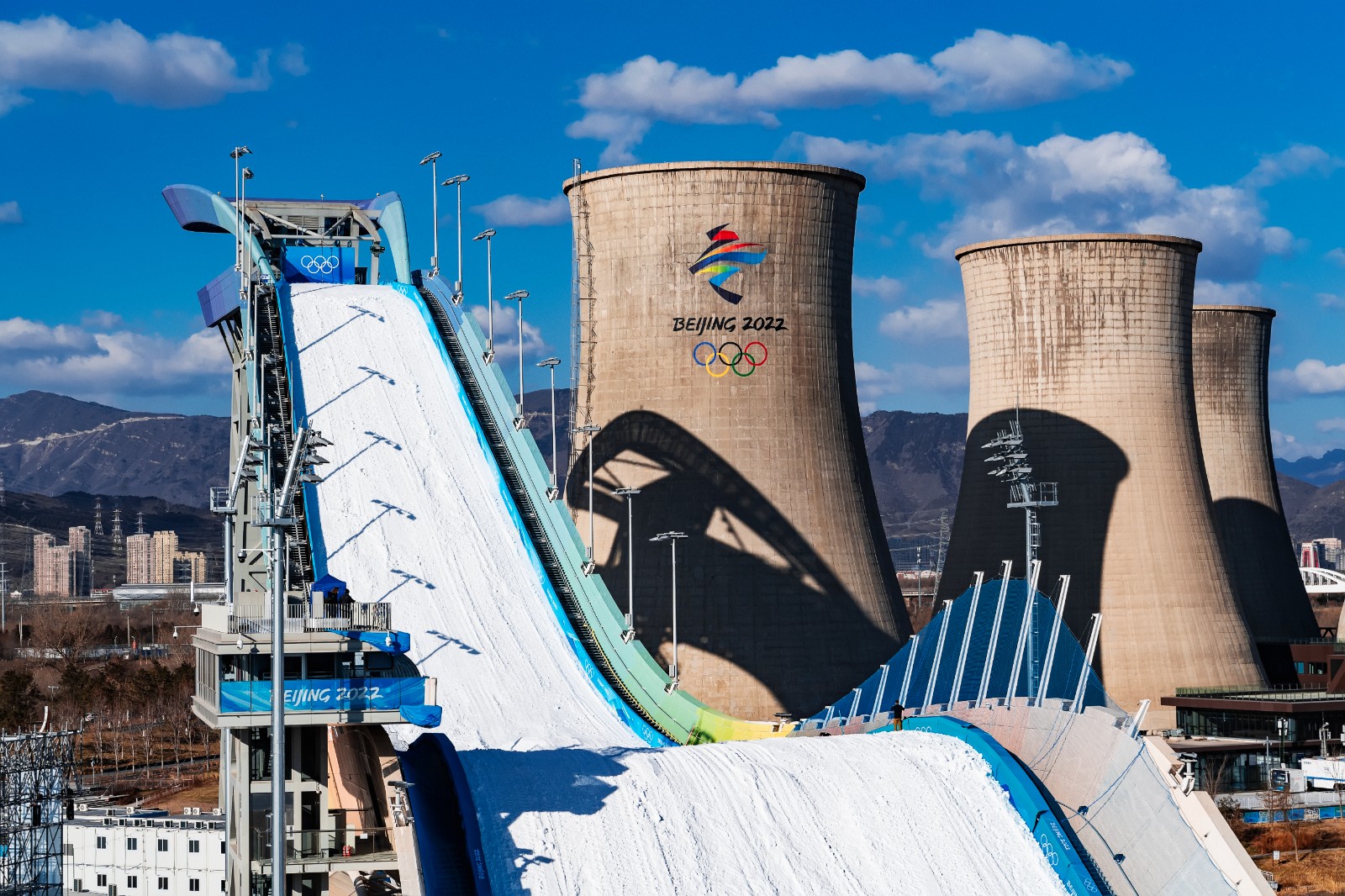
CAFA ART INFO: Design is generally considered to be the most functional professional field within all art disciplines. As a teacher and Deputy Dean of the School of Design, Central Academy of Fine Arts, you also have an indissoluble bond with Olympic design. The emblem design for Beijing 2022 Olympic Winter Games and Paralympic Winter Games was also under your leadership. Then before and after the design was determined, how did you balance aesthetics with the functionality of design in your work? And how did you achieve both distinct recognition and wide dissemination in this design task?
Lin Cunzhen: In fact, art and design are not the same. Art creation focuses more on the expression and thinking of artists, but design should serve the people and should be suitable for groups, society, and individuals themselves. Therefore, it has strong functionality and purpose. In terms of aesthetics, in fact, aesthetics cannot be placed above function. The original intention of the design or the core positioning is very important, so I use some methods and means in design to achieve this goal. We designers often say that no color is ugly, it depends on whether you use it in the right place. In the same way, a graphic is not purely beautiful or purely ugly. If it is not placed in the right environment or within the right context, that is, there is no reference, no premise, and no environment, it cannot be concrete to judge whether it’s good or bad. So it is the same for the design for the Olympic Games. First of all, it has a lot of core elements in the overall framework. Each core element such as the emblem, mascot, sports icon, etc., each of which has a very strong functionality, all of them undertake their own tasks, exert corresponding abilities in their respective tasks and reflect the aesthetic sense in the tasks.
GU Ailing Eileen at Big Air Shougang | Photo by Huang Zongzhi/Xinhua News Agency
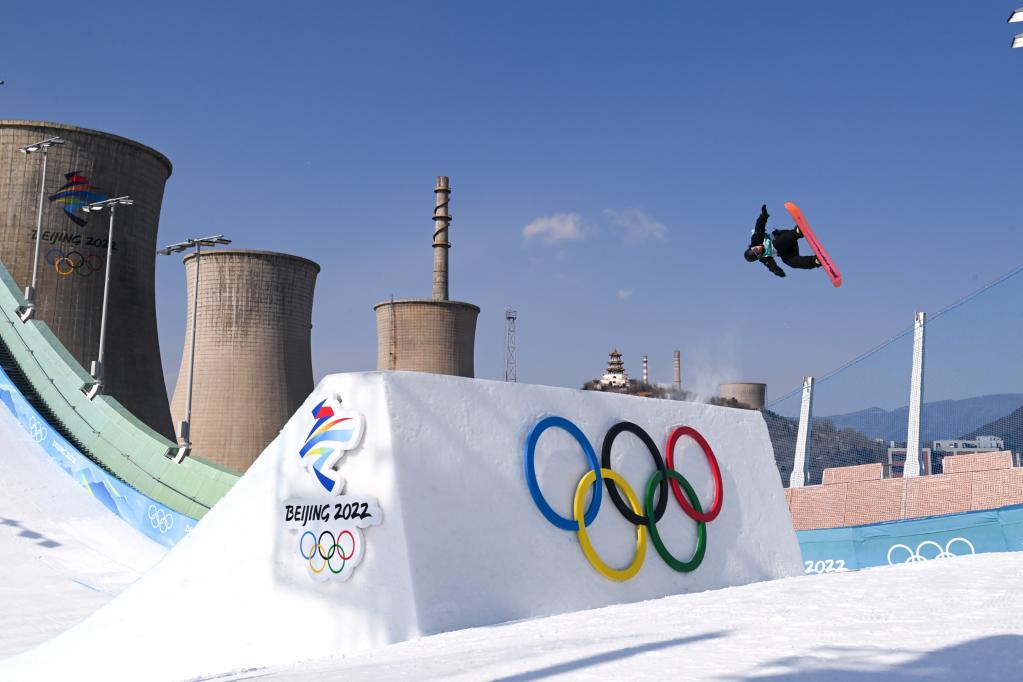
Su Yiming at Big Air Shougang | Photo by Huang Zongzhi/Xinhua News Agency
CAFA ART INFO: As you just mentioned, one of the most impressive scenes in the specific tasks of this Winter Olympic Games is at Big Air Shougang, When GU Ailing Eileen and Su Yiming were in the air frozen with the Winter Olympic Games emblem in the background, many spectators commented on social media platforms that they reacquainted and understood the significance of emblem. So when was your most fulfilling moment regarding design elements at Beijing 2022 Olympic Winter Games?
Lin Cunzhen: Yes, there was a picture that also left a deep impression on me, that is, GU Ailing’s stature in the sky during her training at Big Air Shougang perfectly coincided with the emblem. This was a coincidence that no one has planned, a state where movement and creation fit together naturally. In addition to the overlapping of the emblem in front of the cooling tower of Big Air Shougang with the posture of the athletes, there is also the graphic kit applied to the hoardings for the Winter Olympic Games. This is a design that has not been realized in the previous Olympic Games, allowing the competition and culture to merge naturally. It did not only satisfy the functional requirements, but it also reflected the charm of Chinese culture, and has been fully affirmed by athletes from all over the world in terms of color and design.
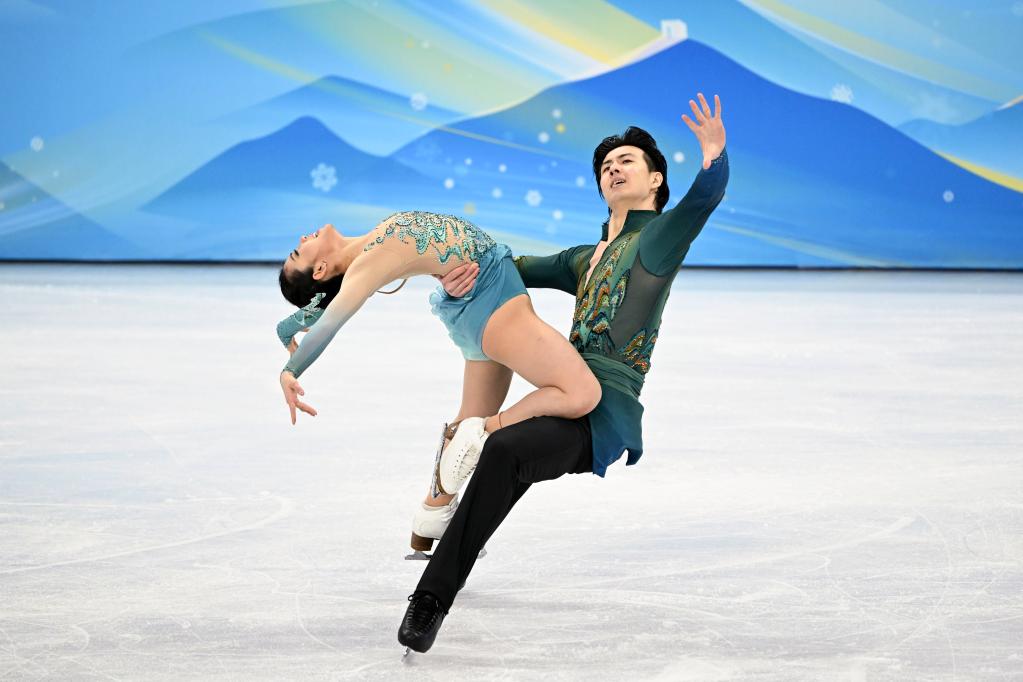
 Graphic Design for Hoardings at Various Stadiums
Graphic Design for Hoardings at Various Stadiums
CAFA ART INFO: In the diversified design tasks for the Winter Olympic Games, the emblem is a symbol that reflects the image of the country, and Bing Dun Dun as a mascot is a cute existence. As the “top celebrity” during the Winter Olympic Games, Bing Dun Dun has also attracted extensive attention from domestic and foreign media. In fact, visual elements and designs centering around pandas have been used many times as the mascots of sports events held in China. Since the Asian Games in 1990, there have been various variants. When talking about the panda image, some foreign reports mentioned whether this was related to China’s “Panda Diplomacy”? What do you think of the sudden popularity of Bing Dun Dun?
Lin Cunzhen: From the very beginning of calling for entries of mascots to the review of ten candidate works on the panda image, in fact, there was a lot of discussion about which animal the mascot should be. Around this issue, in fact, from many levels, whether it was from the decision-maker level, the expert level, or the designer team level this topic has been comprehensively discussed. Panda is one of the endemic animals in China, no matter if you ask anyone in the world, ask him or her to find an animal to represent China (single-choice question), there will only be one answer to this question which is the panda. The Winter Olympic Games is a global sports event. How to accurately express China’s image, only pandas can complete this task. In fact, we also have other alternative images of animals, but it is difficult to realize that it can be regarded as exclusively representing China like the panda, and there are not so many animals that are active in winter, and even fewer animals can represent China. It is even more challenging to offer corresponding education and publicity internationally, so we still design around the image of panda. It has been more than 100 years since the panda was discovered, and countless artists and designers have used the expression and design on the artistic image of a panda. Based on the respect of intellectual property rights and consideration of the factors in identification, we must bring forth new ideas, which is also a challenge we need to confront. And this panda image has to represent the image of the country, it has to be like a panda but not similar to the previous image, which is actually a big challenge for the design.
 Mascot Bing Dun Dun for Beijing 2022 Olympic Winter Games
Mascot Bing Dun Dun for Beijing 2022 Olympic Winter Games
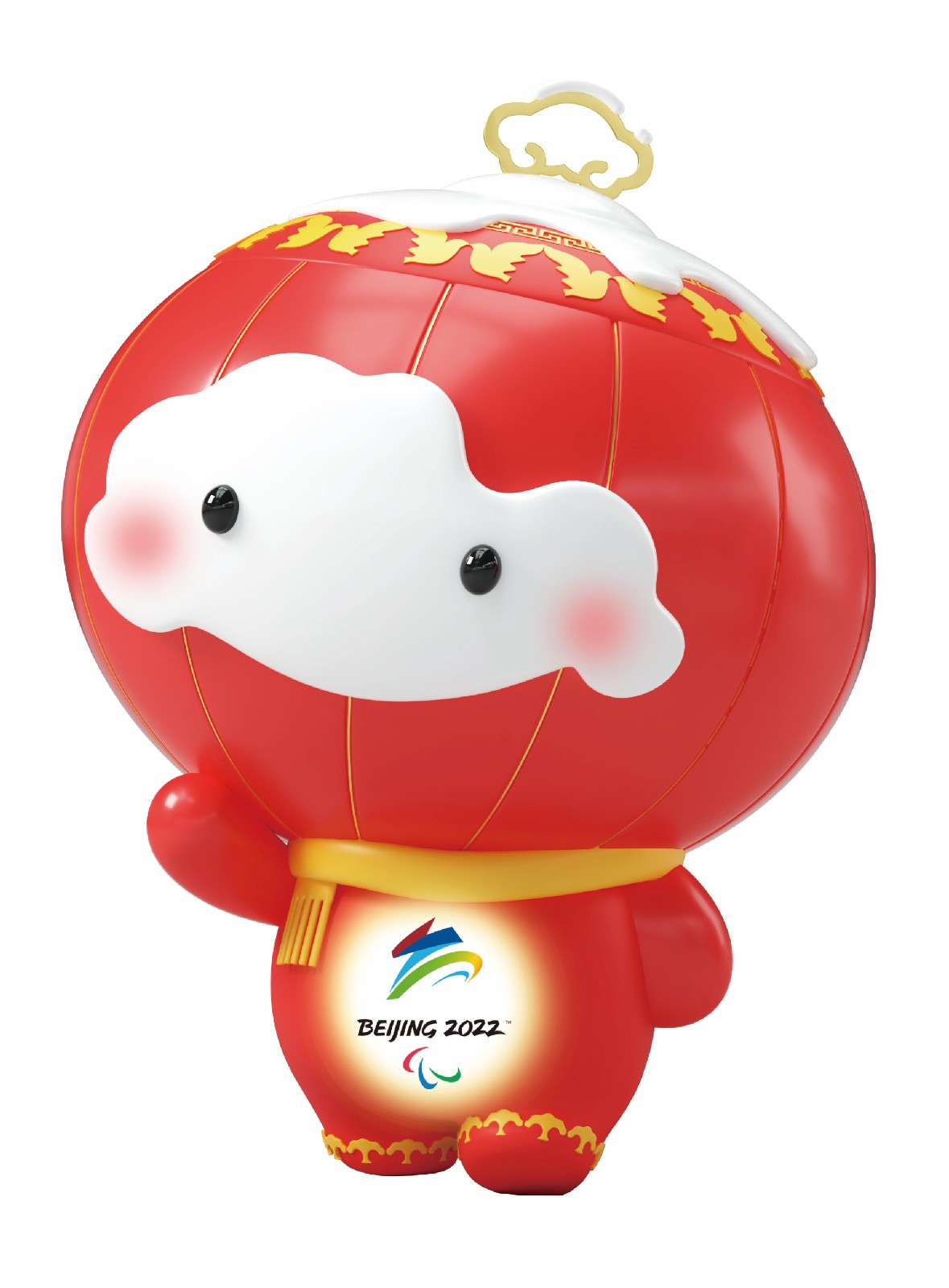 Mascot Xue Rong Rong for Beijing 2022 Paralympic Winter Games
Mascot Xue Rong Rong for Beijing 2022 Paralympic Winter Games
CAFA ART INFO: This also shows that the visual design system of the Olympic Games can be said to be one of the most difficult design projects in the world. Every designer may dream of it. At the same time, the challenging process of this project is also full of hardship as it must comply with IOC regulations and collaborate with other designers and teams. You worked as Deputy Director for Image and Look Team, Beijing 2008 Olympic Committee from 2006 to 2008 and you were also Director of Arts for Beijing 2022 Olympic Winter Games and Paralympic Winter Games. What influences did these bring to you?
Lin Cunzhen: During this process, some changes have taken place in my way of thinking. I was involved in the design of the Olympic Games as early as 2006. At that time, I participated as a member of the design team, and this time I participated and led the team as the Director, so the change in role is a new challenge for me. Recently, I have also been thinking about the work I have done over the past few years. A few days ago, we also conducted an activity with the International Olympic Committee called the “Observer Program”, including members of the National Olympic Organizing Committees from the four countries that later will host the Olympic Games. When I introduced my experience to them, I also systematically sorted out my work in the past five or six years, and I also found that I have gained a lot in this process. I gradually changed from a designer to a director. When I was working for the 2008 Olympic Games, my main job was to complete my own design tasks. Now I need to value the overall work and manage the team well. There are 44 venues in this Winter Olympic Games and I have to connect with 44 working teams, involving fund allocation, equipment installation, safety precautions, competition guarantee and maintenance, emergency services, and exchanges with the International Olympic Committee, etc. It requires team management and coordination, external guidance, communication and systematic integration for other teams. These are all more difficult tasks than emblem design. In addition, I also have a deep understanding that the everything in Olympic Games matters. Any seemingly trivial issue may trigger international disputes. Therefore, we were very cautious and thoughtful on every step. The way I think about design issues has also been improved.
 “Observer Program”
“Observer Program”
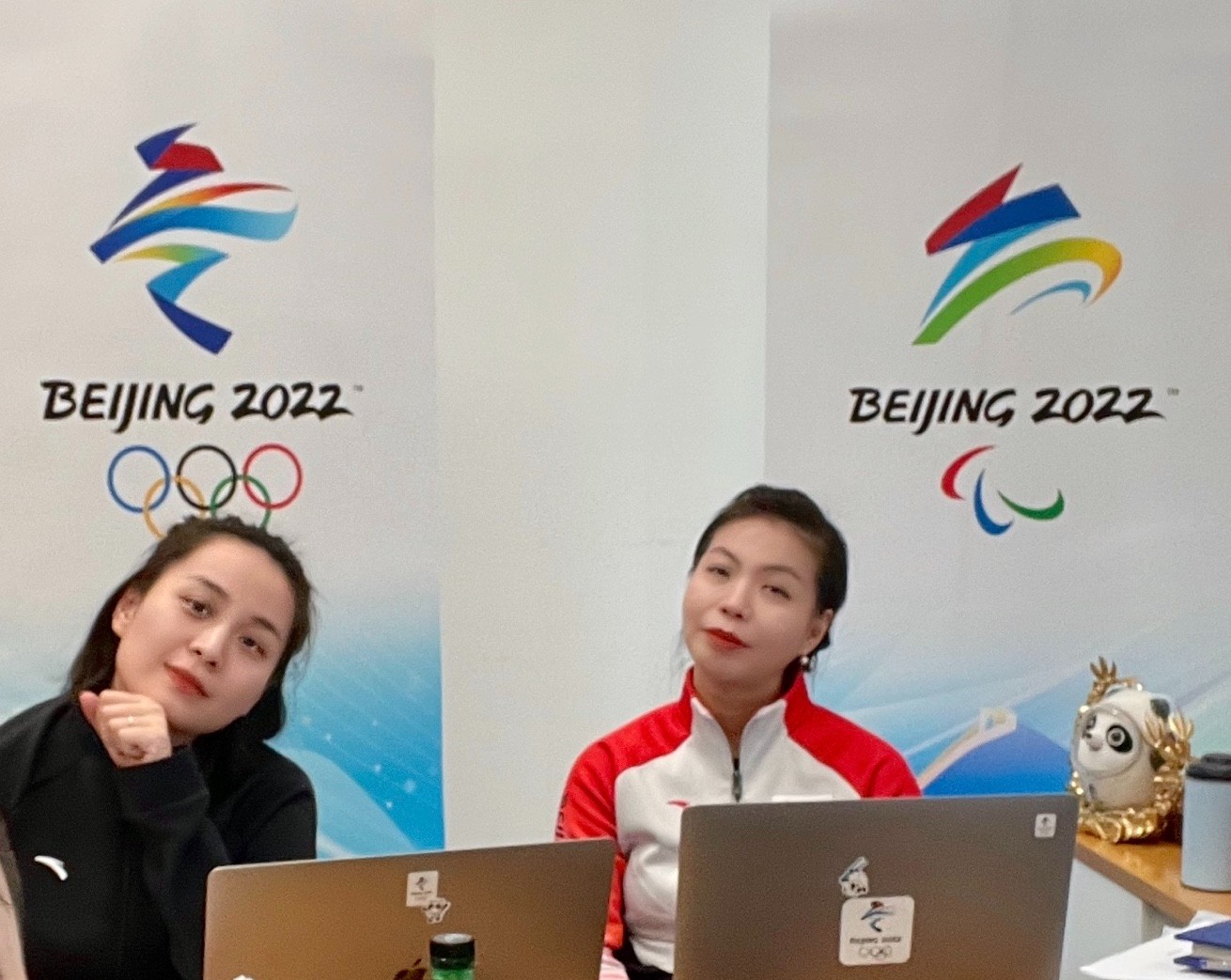
On-site work photos of the “Observer Program”
CAFA ART INFO: The design of the Olympic Games has also promoted the development of the Olympic Games in the process of changing with the times. Could you please talk about the relationship and interaction between the history of Western Olympic design and Chinese Olympic design from your perspective?
Lin Cunzhen: In fact, the maturation and systemization of Olympic design started very early. The emblem and poster design of the Osaka 1964 Olympic Games had distinctive features but no system was formed then. By the time of the Mexico City 1968 Olympic Games, its design already had a very strong visual system. Some applications derived from graphics that formed a systematic prototype, and then the design of the Munich 1972 Olympic Games was very systematic and mascots appeared. Due to the management model of the Olympic Games itself and the characteristics of TV broadcasting affecting the global audience, the high-quality design of the Olympic Games has also been rapidly promoted. The Olympic Games, as the world’s top event, also played a big role in promoting the national development of the host country. The successful hosting of the Beijing 2008 Olympic Games has played a great role in promoting China’s economic development, as well as China’s international influence and diplomatic image. The development history of the Olympic Games in the world actually has a great influence on the design of China. In my opinion, the design of the Beijing 2008 Olympic Games can be seen as a catalyst for the development of Chinese design, after which there was an expansive development of Chinese design. In 2018, we did a “A Retrospective of Chinese Design since Reform and Opening Up 1978-2018”. At that time, when we collected research cases, we did some editing work on the history of contemporary Chinese design. After 2008, excellent cases emerged one after another. The number of selected cases in the following ten years is equivalent to the sum of the first three decades. Before 2008, no one was interested in landscape design. After 2008, the changes brought by the Olympic design also promoted and influenced urban development. For example, the form and specifications of the road flag designed for the Beijing 2008 Olympic Games has also been used now.
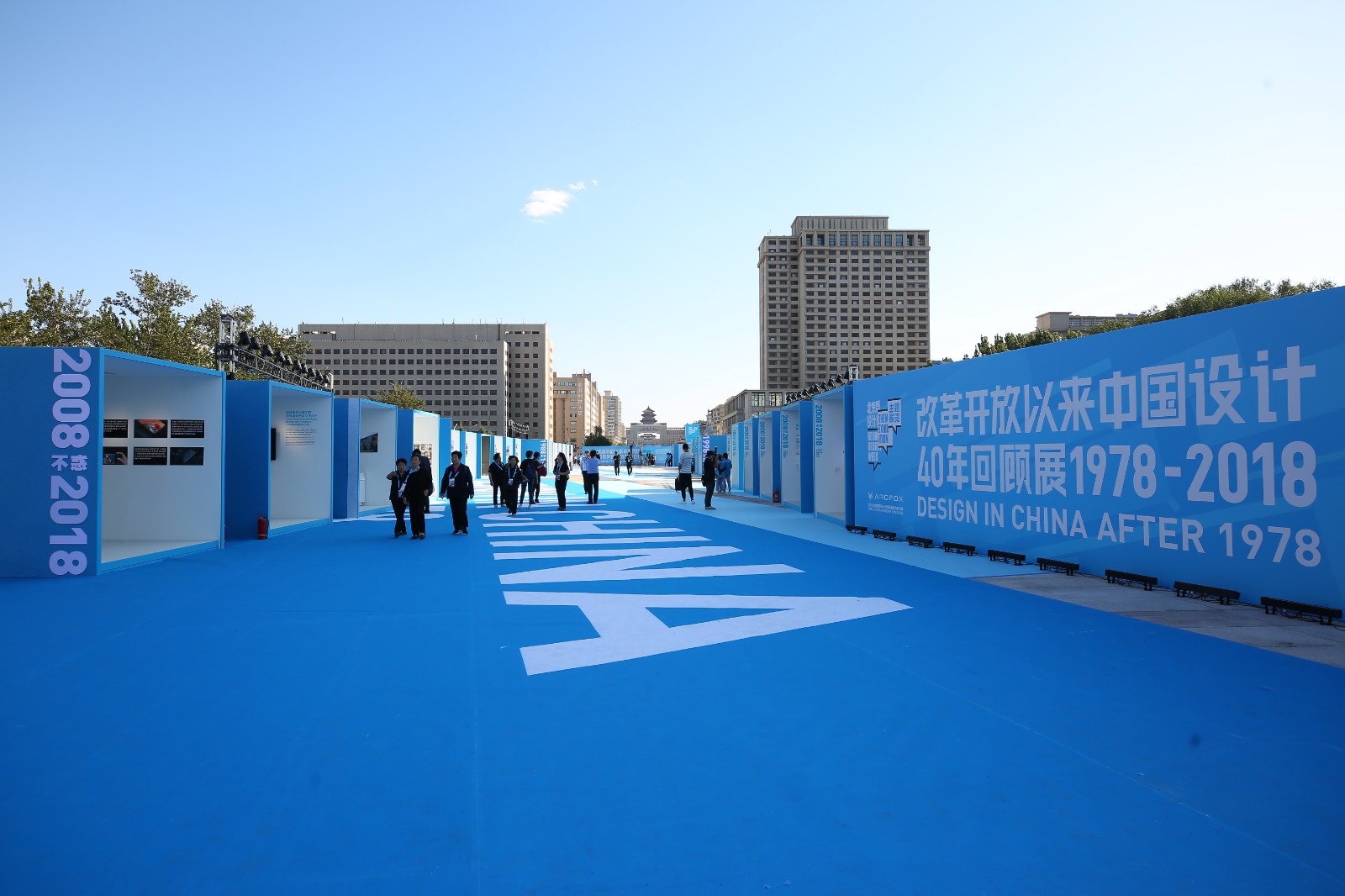
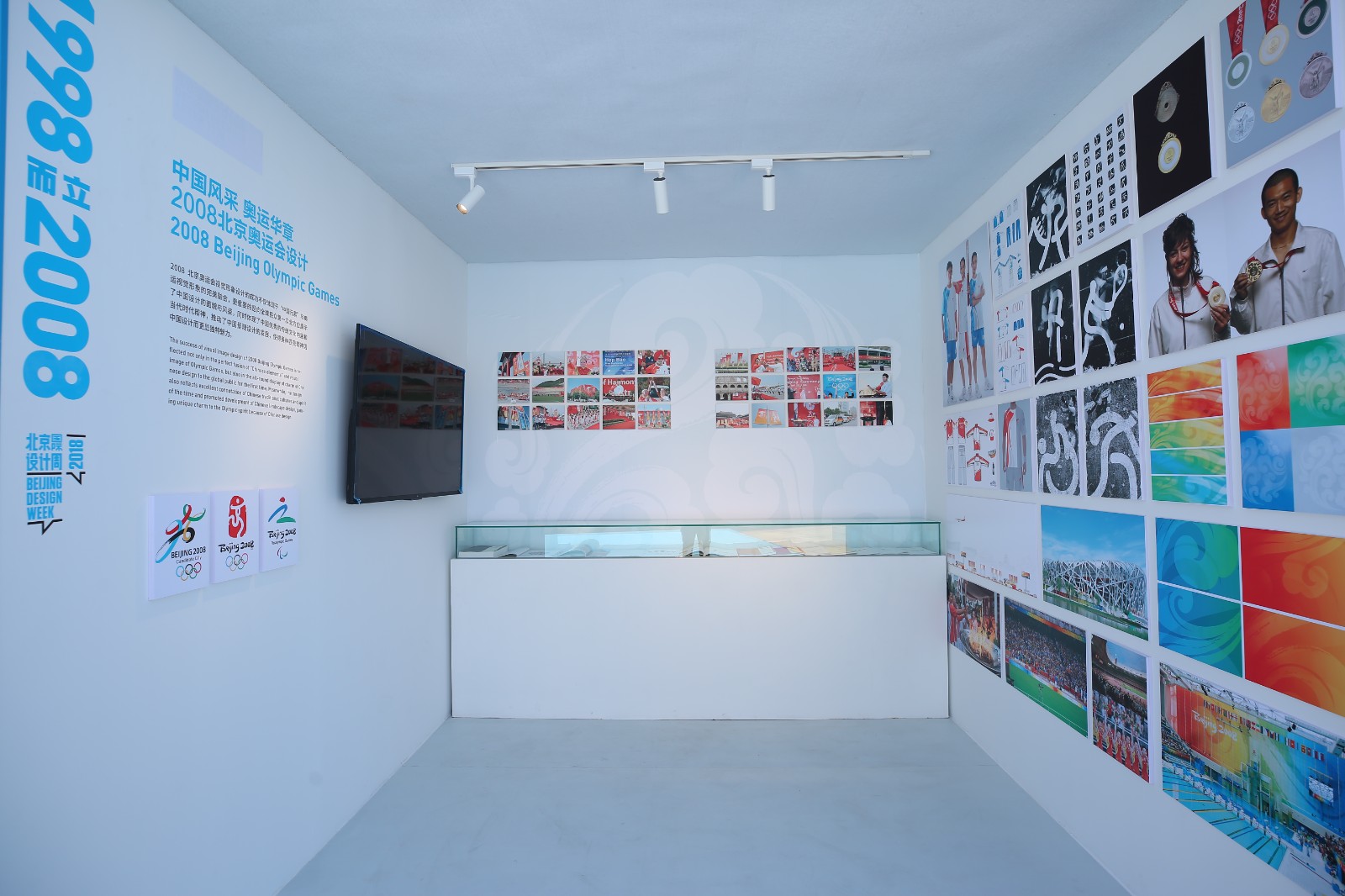
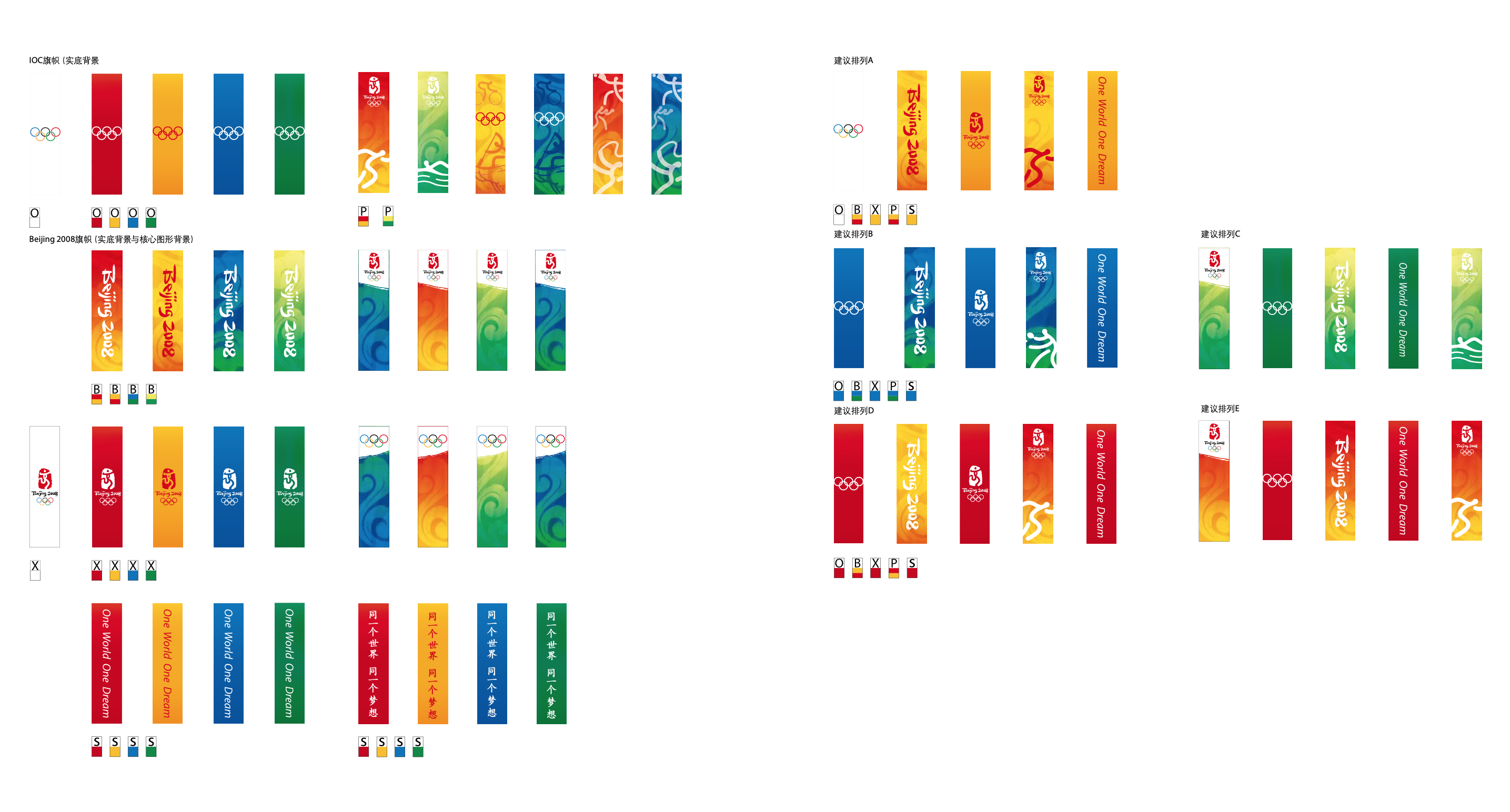 Road flags designed for the Beijing 2008 Olympic Games
Road flags designed for the Beijing 2008 Olympic Games
CAFA ART INFO: In addition to comparing the design of other international Olympic events, from the Beijing 2008 Beijing Olympic Games to the Beijing 2022 Winter Olympic Games, do you think that in these 14 years, the design of the Chinese Olympic Games has made any progress or breakthrough?
Lin Cunzhen: After the Beijing 2008 Olympic Games, Prof. Wang Min, who was the Director of Arts at that time, mentioned that he had a regret as the systematic design for the entire Olympic Games in 2008 was not perfect. At that time, due to a lack of experience, the design elements were completed one by one. When Prof. Wang Min officially served as the Director of Arts for the Beijing 2008 Olympic Games, many design elements had been completed, and it was more difficult to control the overall design at that time. When I learned that I would be the Director of Arts for the Beijing 2022 Winter Olympic Games, Prof. Wang Min specifically mentioned to me that it cannot happen again. Therefore, the system of the Beijing 2022 Winter Olympic Games was more perfect and coordinated. Compared with the Beijing 2008 Olympic Games, the design of the Beijing 2022 Winter Olympic Games is better for it is the natural integration of culture, and the current Chinese design is also more confident. When the International Olympic Committee raised different opinions, I insisted on what we thought was a good design and strove for it. For example, we have insisted on a design plan for half a year, and the entrance and exit of the Ice Cube was transformed into 12 lanterns to enhance the festive atmosphere, which was later also recognized by the International Olympic Committee as an expression of cultural elements. So this is also the expression of our self-confidence in design, which does not only satisfy the functional realization, but it also conveys the cultural connotation. Different from the performance at the opening ceremony, the design of the Olympic Games is to create a harmonious and relaxing atmosphere around the Olympic concept of “taking athletes as the core”. For athletes, winning the championship and achieving good results can be attributed to comprehensive factors, including their own efforts, ice surface and snow surface as well as the environment of the venue is also very important.

Lin Cunzhen communicated with Prof. Wang Min in work | A Screenshot
 Lin Cunzhen participated in the discussion
Lin Cunzhen participated in the discussion
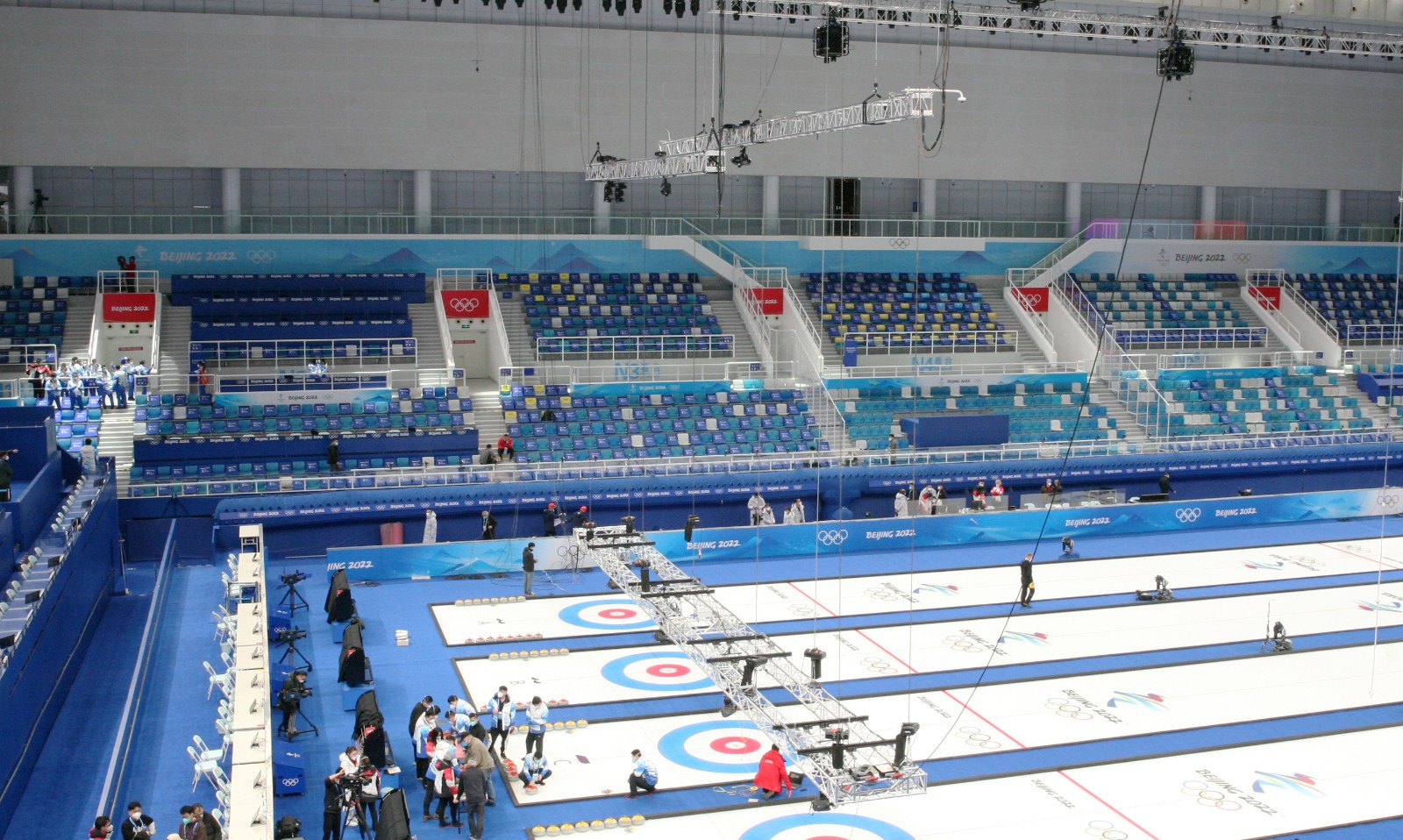 Entrance & Exit of Ice Cube
Entrance & Exit of Ice Cube
CAFA ART INFO: With the rise of the national enthusiasm and the enhancement of national confidence in recent years, designs with more Chinese characteristics and Chinese fonts have attracted the attention and become popular.. What do you think of the relationship between contemporary art design and national aesthetic cognition?
Lin Cunzhen: The more pioneering or personalized features in modern and contemporary design are relatively unsafe for the national image. The overall design of this Winter Olympic Games presents a good appearance, because our design team comprehensively considered and completed the design before submitting the proposal. Even if it is a design proposal led by a foreign team, we have positioned the overall style and culture to achieve a systematic effort towards unity. Therefore, the entire design team for the Winter Olympic Games has already balanced artistry, visual sense, safety and risk aversion in their work and strictly checked them from a professional point of view. Secondly, my professional judgment has also been fully respected. Let professionals talk about professional matters. I have also subtly explained some key points of design and art in the report. The feeling of trust I got from the working process is also very important. From the very beginning, when the Winter Olympic emblem was released, some people criticized why it was a Chinese character again. But I think for the current being, the national image must have very prominent cultural elements to be recognized by the world, so the Chinese characters in the emblem are the most direct and powerful elements.
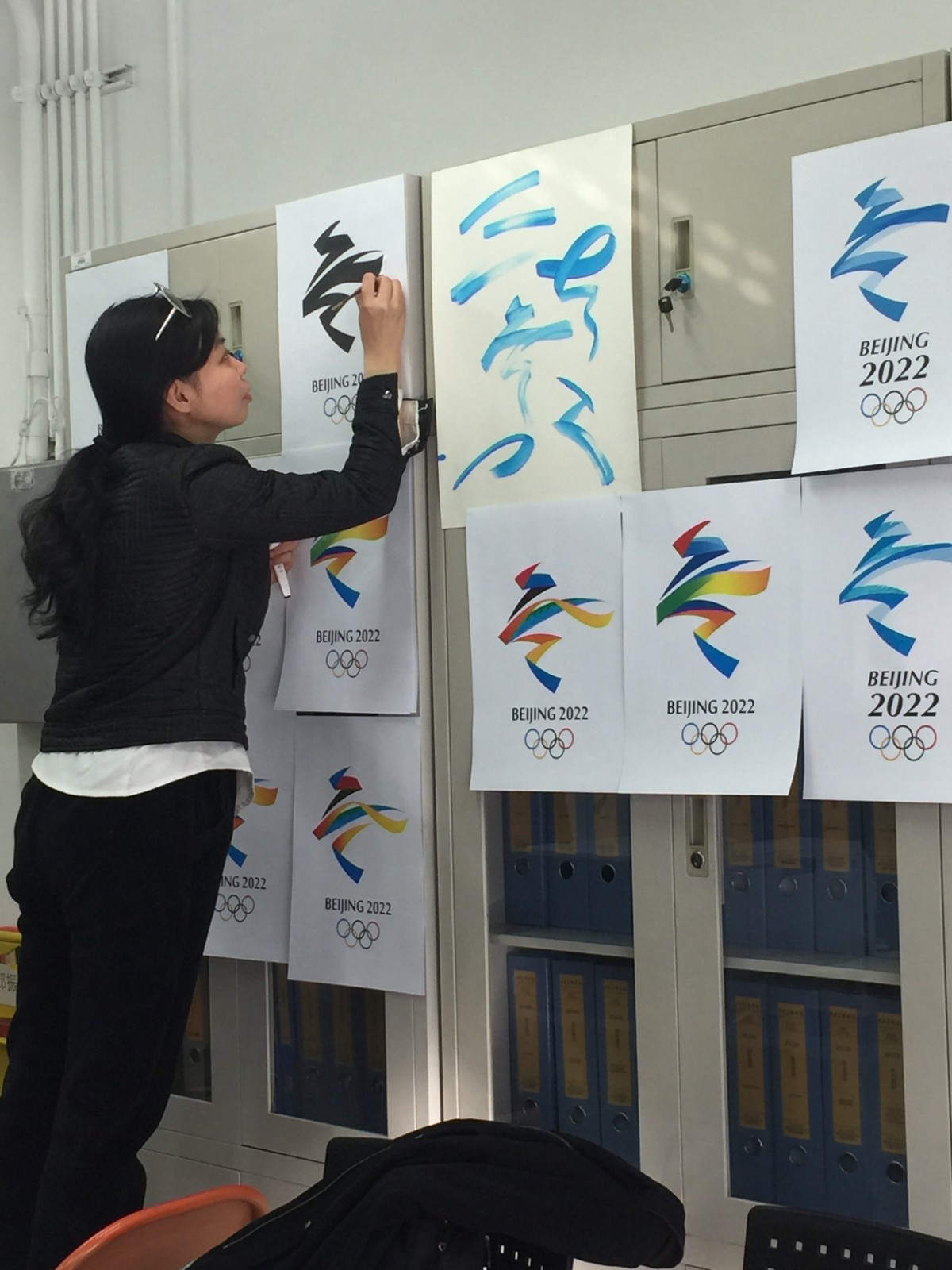
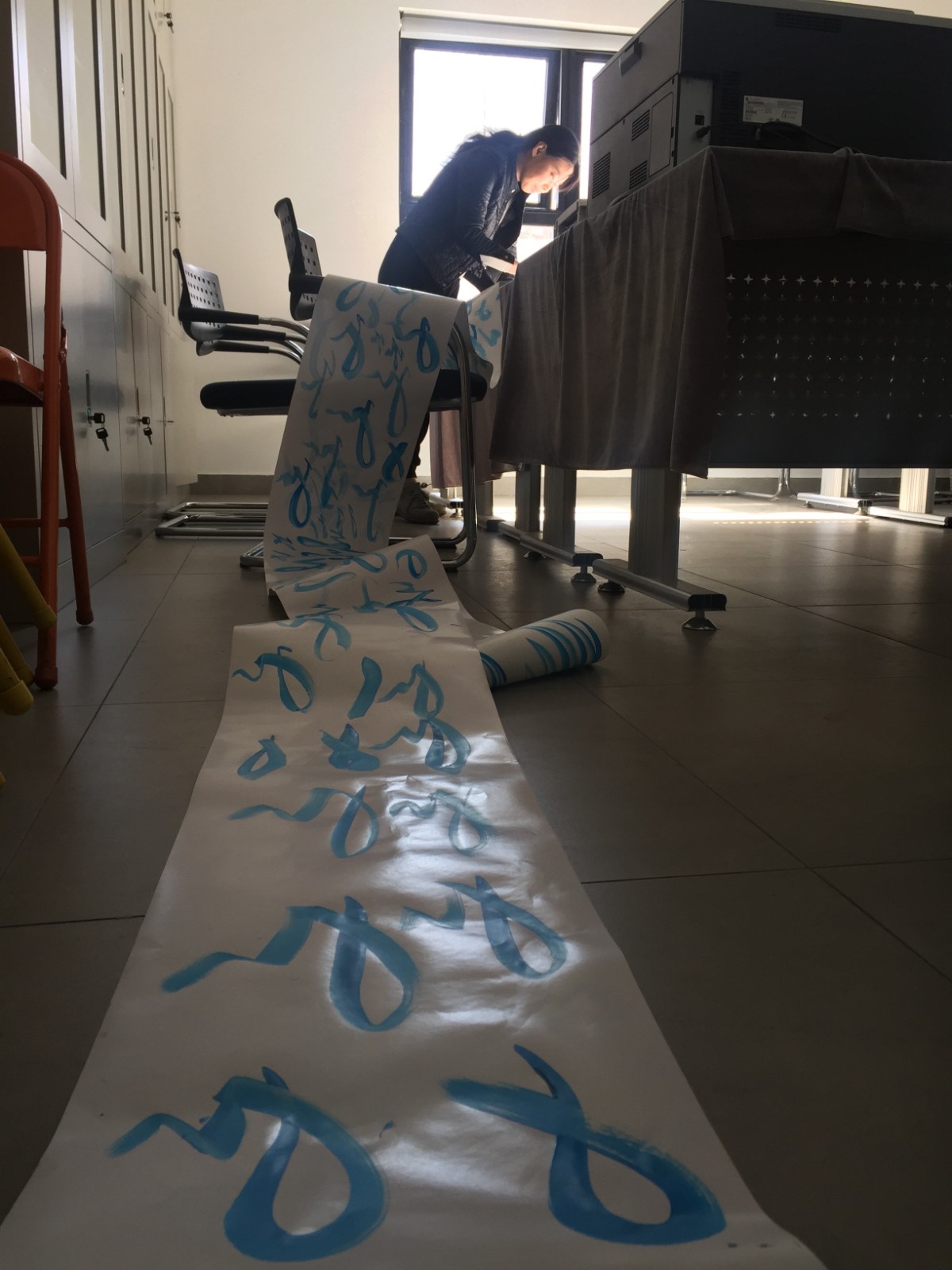 The Work Photo for Emblem Design
The Work Photo for Emblem Design
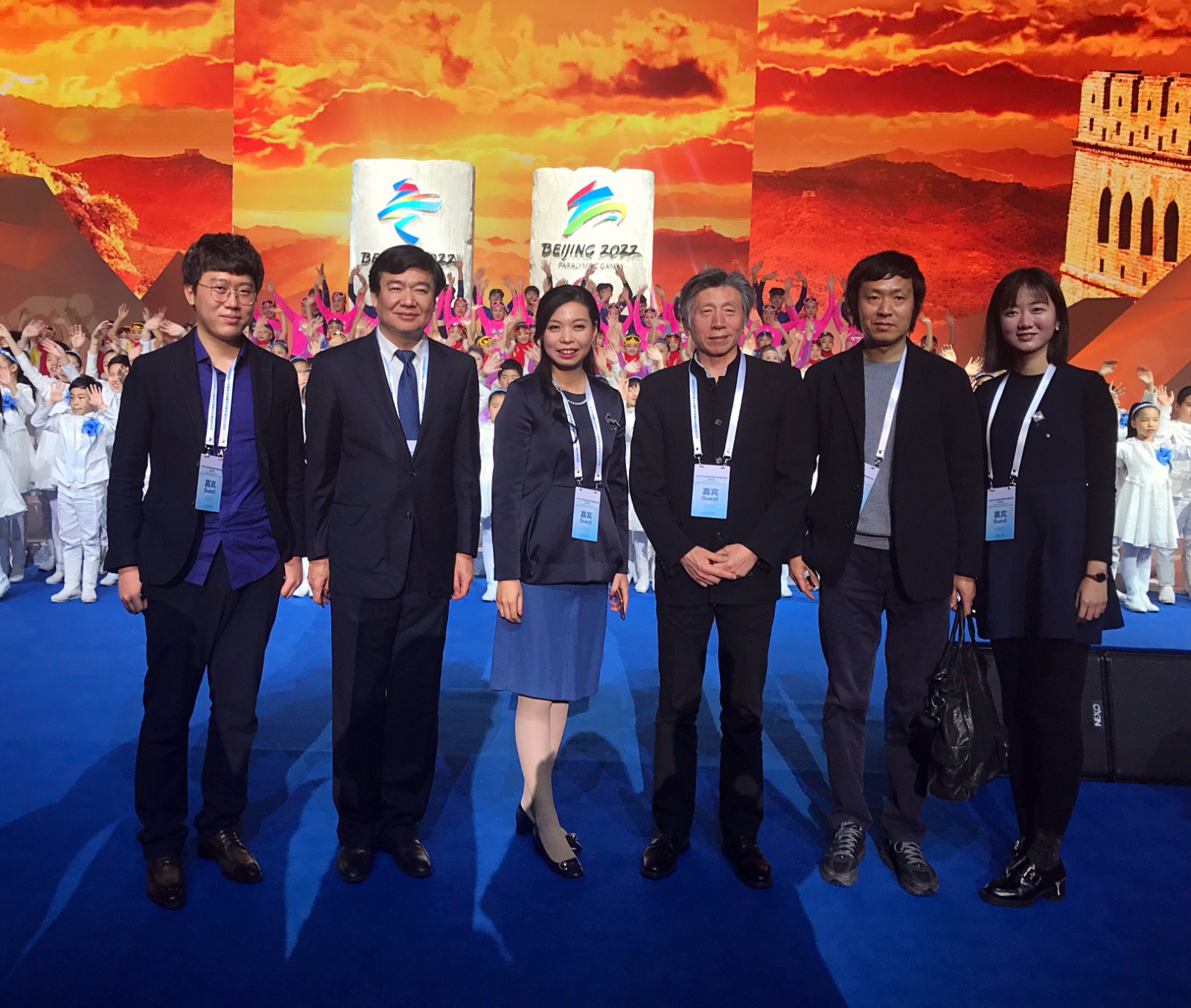 Group photo of the Design Team | Photography by Wang Donglin
Group photo of the Design Team | Photography by Wang Donglin
CAFA ART INFO: What impact do you think the design of this Winter Olympic Games will have on the future games? Or what role do you think it played in the history of Olympic design?
Lin Cunzhen: I think the influence and role that the design of this Winter Olympic Games can have on the future cannot be commented on by me. In the course of my work, I also met a member of the International Olympic Committee who said that fortunately this was in China, and the emergency response to the landscape image design and implementation can only be completed in China, which also made me feel proud. I believe that both Beijing 2022 Olympic Winter Games and Paralympic Winter Games will have far-reaching and valuable implications for the development of the Olympic Movement and the understanding and promotion of winter sports in China. As IOC President Mr. Bach also mentioned at a press conference on February 18, the number of people who followed the Winter Olympic Games through the IOC’s social media accounts has reached 2.7 billion and attracted at least 1 million new sports enthusiasts. Therefore, I think this Winter Olympic Games will not only drive the awareness and cultural confidence of the Chinese people, but it will also provide certain experiences and inheritance for the development and progress of the Olympic Games in the future.
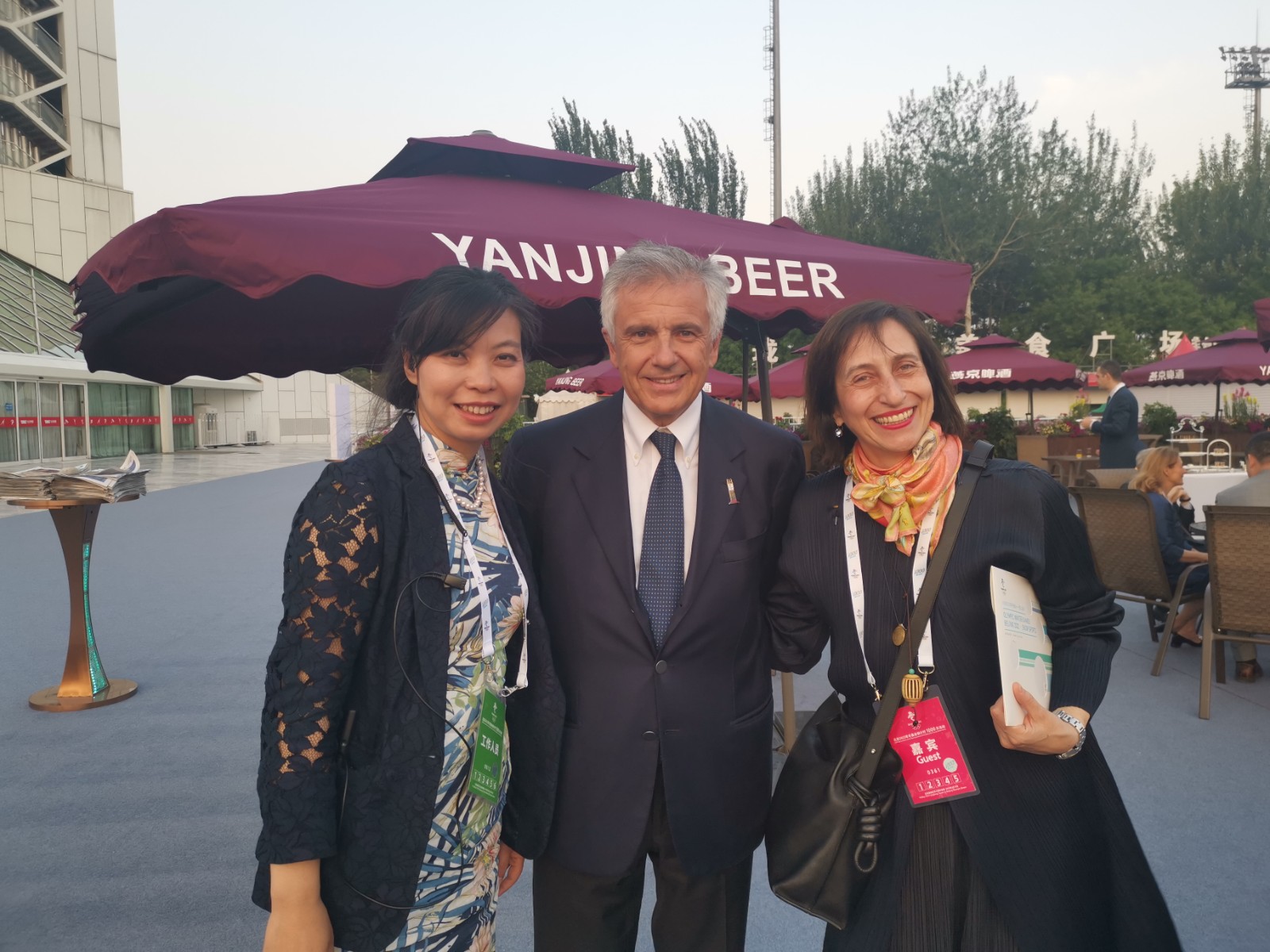 Lin Cunzhen (left), Juan Antonio Samaranch Jr., chairman of the International Olympic Committee (IOC) Coordination Commission for the Beijing 2022 (middle) and Theodora Mantzaris (right) took a group photo in the countdown to the 1000-days from Beijing 2022 Winter Olympic Games
Lin Cunzhen (left), Juan Antonio Samaranch Jr., chairman of the International Olympic Committee (IOC) Coordination Commission for the Beijing 2022 (middle) and Theodora Mantzaris (right) took a group photo in the countdown to the 1000-days from Beijing 2022 Winter Olympic Games






























